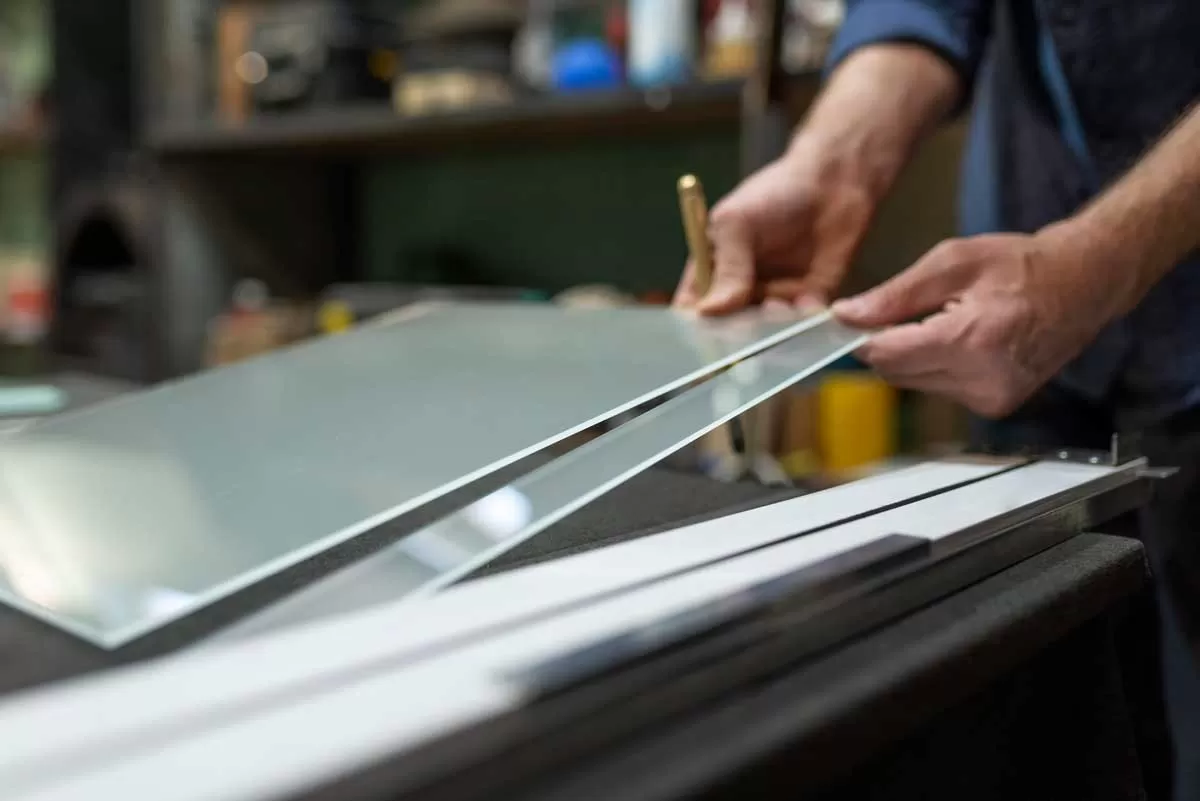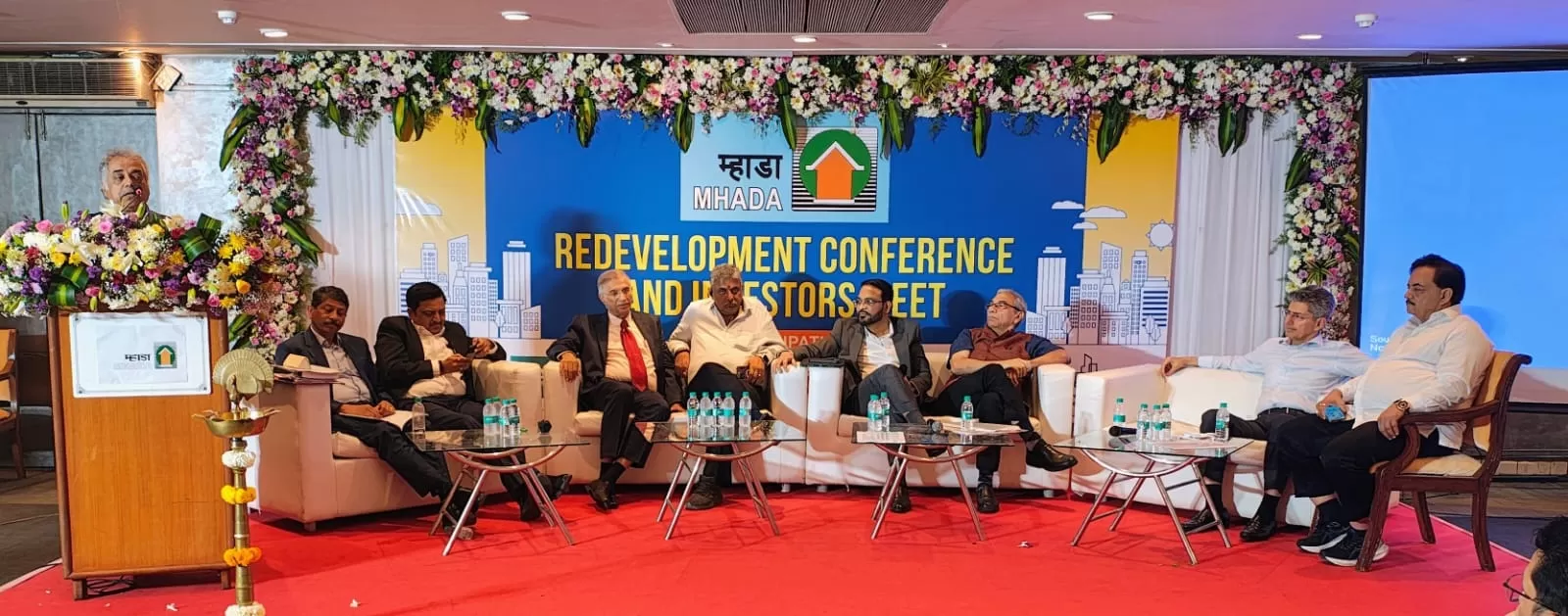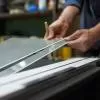The formwork industry is slowly growing as contractors adopt better ways of going about concreting activities and globally used products make their way into India, discovers Charu Bahri.
Infrastructure and real-estate contractors engaged in the construction of critical structures—often as part of fast-track, big ticket projects - can take no chances with the quality of the outcome. Commerce also plays a huge role in the execution of large projects, making it essential for contractors to enhance productivity, to adhere to deadlines, budgets and expected returns on investments. Thus, speedy execution to complete projects ahead of or on time is the need of the hour. At the same time, as the construction industry matures, expectations from it are growing - it’s expected to be more accountable and responsible towards its stakeholders. That’s why safety is emerging as an industry buzzword. Put together, these reasons explain why more contractors are adopting modern system formwork and scaffolding.
Efficiency enhancers
“Using the right formwork can bring down the time taken to complete a project as well as reduce associated costs,” says Siddharth Janak Shah, Managing Director, COSMOS Construction Machineries & Equipments Pvt Ltd. “Clients using our formwork have experienced a 60 per cent reduction in time taken for shuttering. For instance, the right choice of formwork can reduce the time taken to construct each floor to six days from 10 to 15 days. This brings down the cost of labour. Formwork yielding a consistent finish can also reduce the need for plastering, which saves input costs even further.”
Modern formwork systems deliver significant benefits, especially in the construction of high-rise buildings. “At heights exceeding 50 m, fixed formwork systems with working platforms and safety arrangements handled by automated mechanical process double up as scaffolding,” says Surajit Ray, Country Head, Ulma Formwork Systems India Pvt Ltd. “Lightweight modular panel formwork with a preset re-propping system also caters to the flat slab trend prevalent in this market.”
Plan ahead
System formwork, especially products from multinational corporations adhering to European standards, entails a considerable upfront investment. The use of formwork also mandates advance planning. “As timely completion of projects is the essence of construction, meticulous planning of the type of formwork to be used, the quantity of each type of formwork to be engaged for various concreting activities and movement schedules of the formwork throughout the project have to be implemented during the project planning stage,” adds Ray. “This planning is better drawn up with inputs given by both the formwork vendor and the construction agency.”
Custom-made aluminium formwork may also require planning in advance, relating to submitting project designs and shell drawings to manufacturers of aluminium formworks and accessories for the product to be manufactured to meet individual requirements. Shah points out that this investment in formworks is easily recovered in the case of large projects as the formwork may be reused anywhere between 100 to 250 times. Besides, custom-made formwork reduces the time taken to cast floors.
Market size
Despite these benefits, the industry still has not adopted modern formwork methods as a whole. “Traditional formwork accounts for 95 per cent of the formwork industry in India while system formwork contributes only 5 per cent,” says Raj Lakhani, Managing Director, PERI (India) Pvt Ltd. As to the size of the formwork industry, KV Srikanth, Senior Sales Manager – Key Account, Doka India Ltd, opines, “Given that there is no specific monitoring body to assess the demand and supply of formwork and shuttering in India, we can only estimate its size based on the consumption of cement and ready-mix concrete (RMC), and factoring for cement used for finishing, plain concrete for floors, etc. We reckon the system formwork market in India is about Rs 600 crore.”
The formwork market is certainly growing at a steady clip. “Our aluminium formwork technology was specially developed to speed up the construction of multi-storeyed buildings planned as cast-in-situ monolithic RCC load bearing walls and floors,” says Shah. “That makes the product well suited to mass housing projects. We’ve seen demand grow by more than 100 per cent in two years.”
Meanwhile, Lakhani observes, “Trends in the Indian market show a greater willingness to use formwork technology, which will create more employment opportunities for the highly technically skilled sector, a better trained unskilled labour workforce and use of superiorly designed engineering systems.” And according to Srikanth, “The present share of system formwork, which is currently less than 10 per cent in infra projects, will increase to 20-25 per cent in the next three years.”
Why’s that? System formwork is especially useful for infrastructure such as dams, power houses, water carrying channels and tunnels, containment tanks, TG deck and cooling towers; housing and high-rise buildings.
Besides, the entry of global players in the formwork market is helping to spread awareness of the benefits of system formwork. “Of course, it would also help if project specifying and approving authorities also insist on the use of system formwork and standardisation to deliver RC structures of high quality and in a cost-effective, safe and timely manner,” adds Srikanth.
Increasing availability
Global players stay abreast of changing needs and introduce appropriate products into the market. Srikanth points out that Doka’s automatic climbing formwork system was used for the Bandra-Worli Sealink pylon; it can also be used for the construction of bridge towers, high-rise cores, etc. “Going forward, we’re introducing Doka’s medium-category, load-bearing towers system Staxo 40, which is apt for Indian construction styles,” he says. “Staxo 40 combines the advantages of frame systems and single-component systems. As more natural draft cooling towers are being constructed for power projects, Doka has also introduced the fully mechanised Doka SK175 cooling-tower formwork that helps achieve and maintain a one-day cycle per concreting section. Its precision adjustment of the cooling-tower formwork and robust steel formwork sheeting ensure dimensional accuracy without sacrificing speed as the structure rises. Likewise, Doka has introduced its crane-lift MF240 and 150F climbing formwork systems to help the speedy and safe construction of liquefied natural gas tanks.”
Allied services
Formwork providers are also looking to drive sales and add more value to their clients by offering allied facilities. Doka offers a comprehensive range of services that combine with its economically optimised formwork systems to make high-end complete solutions for every formwork project. COSMOS offers supervisors to work at client sites to demonstrate the use of their product for one floor cycle.
“Beyond showing customers how to safely set-up and knock down formwork, proper maintenance and storage helps customers amortise the cost of formwork over the lifecycle of several projects and thereby maximise the value they derive from their investment,” says Ray. “To this end, we help our customers to implement proper maintenance and storage procedures for the components.”
Choose right
Formwork helps yield desired outcomes, if correctly chosen and used. By and large, formwork failure is attributed to faulty formwork design, use of substandard components, ignoring prescribed procedures for the set-up of formwork and the required support system, and weak foundation used to support heavy formwork systems.
Further, Ray elucidates key aspects that must be considered to choose the right formwork: “Formworks should be selected after considering the weight and shape of concrete, the various heights at which the construction is to be done, and the availability or non availability of cranes at site. Generally speaking, modular formwork systems allow greater flexibility of usage over the larger lifecycle duration of the components.”
Indeed, if the industry puts its best foot forward by making the right choices, the right outcomes will automatically emerge.
Case 1 (Formwork used for mass housing)
Equipment: COSMOS aluminium formwork
Vendor: COSMOS
User: Indu Projects Ltd
Project: City slum rehabilitation, a Jawaharlal Nehru National Urban Renewal Mission (JNNURM) project under Pimpri Chinchwad Municipal Corporation
Purpose: The aluminium formwork is being used for the construction of tenements (mass housing) in Pune.
Key features: The panel, which is the basic element of the formwork, has an aluminium face sheet with ribs made of extruded aluminium rail sections. This makes it a lightweight panel with high stiffness-to-weight ratio with negligible or no deflection. The de-shuttering of the form work is very simple. The props supporting the horizontal shuttering are in direct and continuous contact with concrete slabs even while the wall and floor slab formwork panels are being de-shuttered as per the provision of the IS-456-2000 code for plain and RCC.
Client’s comments: “Aluminium formwork technology is well suited to develop monolithic structures that are typical of mass housing projects, as it enables the column, beam, slab, and wall to be completed in the same operation,” says Satyanarayan Boka, Project Manager, Indu Projects Ltd. “This increases efficiency and produces a strong structure with consistent concrete finish and shapes, floor after floor.”
Case 2 (Formwork used for residential tower)
Equipment: Doka SCP 400 (automatic climbing platform 400) and Doka Framax Xlife (panel system)
Vendor: Doka India Pvt Ltd
User: Indiabulls Real Estate Ltd
Project: Indiabulls SKY in Lower Parel, Mumbai
Purpose: The formwork is being used for the lift core wall.
Key features: The client also used two newly launched Doka products: stripping corner and a special bracket for rebar fixing. The panel height was 4.2 m. The automatic climbing platform system is a heavy-duty hydraulic system with a capacity of 40 tonne per hydraulic cylinder. This helped place other heavy equipment on the top (+1) level platform and be lifted along with the system to the next level. It also provides a very wide open area of work with proper safety barricades. The entire formwork and platform assembly can be lifted to the next level in one push of the cylinder, which speeds up the work remarkably. The Doka SCP 400 system required only one level pocket for one lifting operation; this reduces the structural recess into the main RCC Structure. Framax Xlife formwork is designed to carry very high concrete pressure. Self-compacting concrete can comfortably be used as these panels are fully watertight.
Case 3 (Formwork used for residential tower)
Equipment: MEVA automatic climbing (MAC) system and MEVA AluFix - handset panel wall formwork
Vendor: MEVA Formwork Systems Pvt Ltd, Navi Mumbai
User: Shree Ram Urban Infrastructure Ltd
Project: Palais Royale, a high-end residential complex in Worli, Mumbai
Purpose: Constructing building cores usually takes about five days. When the building core climbs ahead, the links between the time-consuming activities of construction of slab and building core are removed. Then, the core construction activity is not on the critical path, thereby reducing overall construction time. Additionally, hydraulic equipment makes the activity crane-independent. Alternatively, if core walls are constructed off the slab, i.e. without climbing ahead, both activities will be on a critical path. If one activity gets delayed, the other has a late start, affecting overall construction time.
Key features: AluFix handset panel wall formwork is a versatile, flexible and easy-to-assemble modular wall formwork hand-set system that requires no crane (apart from assembly). Its hydraulic units allow the entire system, including platforms and wall forms, to be lifted in one continuous operation. The lift of 4 m takes only about 60 minutes. The long-stroke heavy-duty hydraulic system is equipped with safety features such as a non-return ratchet that locks on each cylinder. Beams rest in pockets set in concrete walls making the system completely safe. MAC is designed to provide complete protection for workers and sufficient working and storage space on the external hanging platforms. A three-way adjustment device allows for completely independent adjustment of formwork panels in each direction, ensuring greatest possible accuracy (tolerance of +/- 3 mm) along with speeding up the stripping and setting up process. MAC also accommodates the mast of the climbing tower crane as well as the mast of climbing placer boom or integration of the boom placer within the system.
What's an offer?
| Company |
Formwork offered |
| Cosmos Construction Machineries & Equipments Pvt Ltd |
Aluminium formwork system Modular column shuttering |
| PERI (India) Pvt Ltd |
● Automatic climbing systems
● Rail climbing systems
● Wall formwork systems
● Panel formwork systems
● Slab formwork systems
● Shoring systems |
| Doka India Ltd |
Doka wall/column system
● Panelled system like Framax Xlife, Frami Xlife, etc
● Large Area Top-50 Doka floor system
● Dokamatic Table
● Doka Flex 1-2-4
● DokaFlex Table
● Doka load-bearing towers such as Staxo
Doka Climbing System
● Platform SCP
● Automatic climbing formwork SKE
● Dam formwork
● Cooling tower formwork
● Climbing formwork Xclimb 60 , MF 240 working and protection platforms
● Bracket platforms Floor protection system |
| Ulma Formwork Systems India Pvt Ltd |
● Self-climbing systems that mitigate the use of a crane
● Horizontal formwork
● Vertical formwork
● Scaffolding MEVA Formwork Systems Pvt Ltd
● MevaDec hand-set slab formwork system
● Mammut 350 Heavy-Duty 100 kN/sq m Load Champion
● MGC - MEVA guided climbing system
● MGS - MEVA guided screens
● AluFix - hand-set panel wall formwork system
● MEVA automatic climbing system● Conventional climbing systems using climbing brackets
|
MEVA Formwork
Systems Pvt Ltd |
● MevaDec hand-set slab formwork system
● Mammut 350 Heavy-Duty 100 kN/sq m Load Champion
● MGC - MEVA guided climbing system
● MGS - MEVA guided screens
● AluFix - hand-set panel wall formwork system
● MEVA automatic climbing system |

















